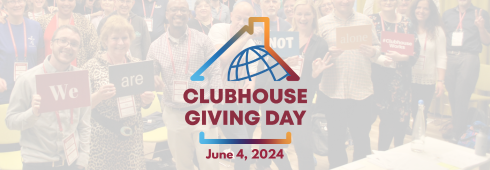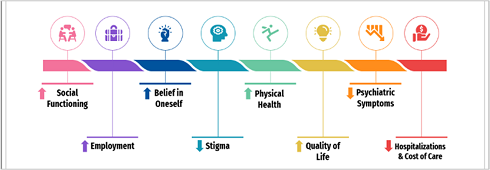breaking news

New U.S Congressional Clubhouse Caucus Founded: Exciting News and Potential for Growth of the Clubhouse Movement across the U.S.

Forgot password? Enter your email above and click here.
To start a new Clubhouse Membership or re-activate a former Clubhouse Membership, click below:
There simply are not enough resources today for everyone with a mental illness who needs help. It’s a crisis situation and the numbers are growing. We are a non-profit organization that helps start and grow Clubhouses globally where people can go to get their lives back.
learn more
New U.S Congressional Clubhouse Caucus Founded: Exciting News and Potential for Growth of the Clubhouse Movement across the U.S.

Who We Are: Our Mission and Our Work. Our Community Speaks Out.

Join the 4th annual Clubhouse Giving Day to support our Clubhouse movement's mission to transform individuals and communities impacted by mental illness. We are pleased to share this opportunity with our member Clubhouses and Coalitions to promote each community, fundraise for vital programming and celebrate our global community. Clubhouse registration opens March 1. Click here to learn more and register.

Clubhouse International appreciates the generous gift made by The Stephen Colbert Americone Dream Fund of Coastal Community Foundation of SC. The fund supports charities of concern to Stephen Colbert The contribution will help us continue our work bridging the gap to mental health recovery via resources and opportunities for our Clubhouse members around the world.

NEW! Transforming Lives: Clubhouse Impact Report, summarizing the most compelling research on the Clubhouse Model, is now available! This visual report integrates findings from 15 rigorous, peer-reviewed studies conducted between 1999 and 2021 into an integrated theory of change, shown in the image above created by Dr. Joy Agner and her team at the USC Chan Division of Occupational Science and Occupational Therapy, USA. Click here to learn how to download and customize this invaluable advocacy tool!

Clubhouse International welcomes and supports the launch of the World Health Organization (WHO) Guidance on community mental health services: Promoting person-centered and rights-based approaches. We are pleased that the Clubhouse Model of psychosocial rehabilitation is included in the WHO guidance and technical packages, and that our Training Center, Phoenix Clubhouse in Hong Kong, is identified as an example of community-based mental health services that are following good practices.

There is significant research substantiating the effectiveness of the Clubhouse Model and the added benefits of Clubhouse Accreditation. New research is continually available: visit our research page at https://clubhouse-intl.org/what-we-do/research/ to learn more.

people/year are reached by 320 Clubhouses in 30+ countries

employment rate at Accredited Clubhouses annually – double the rate for people in the public mental health system

One year of holistic recovery services are delivered to Clubhouse members for the same cost as a 2-week psychiatric hospital stay

Criminal justice system involvement is substantially diminished during and after Clubhouse membership